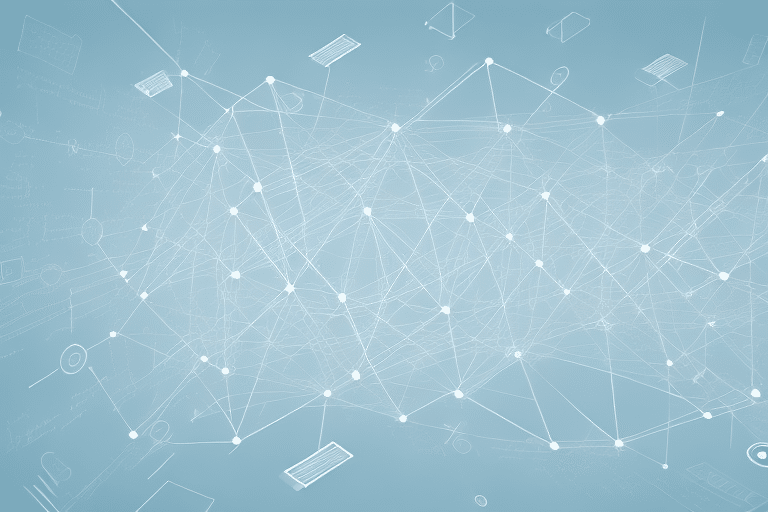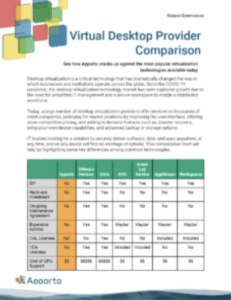The Current Landscape of Cybersecurity in Higher Education: Challenges and Opportunities
As technology continues to evolve and become more integrated into everyday life, the need for robust cybersecurity measures has become increasingly apparent. This is especially true in higher education, where vast amounts of sensitive data and intellectual property are stored and accessed daily. While cybersecurity has always been an essential concern, recent years have seen a significant increase in the number and severity of cyber attacks targeting educational institutions. In this article, we will explore the importance of cybersecurity in higher education, the unique challenges faced by institutions, and the opportunities for strengthening cybersecurity measures.
Understanding the Importance of Cybersecurity in Higher Education
Just a few decades ago, cybersecurity was a relatively minor concern in higher education. However, modern education relies heavily on technology, and this trend shows no signs of slowing down. This has led to a growing need for enhanced security measures to protect against increasing cyber threats. Educational institutions store a vast amount of sensitive information, including student data, financial records, research data, and intellectual property. This information is a prime target for cyber criminals who can exploit vulnerabilities in an institution’s security systems to steal data or hold it ransom for significant financial rewards.
The Role of Technology in Modern Education
The use of technology in education has increased dramatically in recent years. The growing number of online learning platforms and advanced digital tools have streamlined many educational processes, making it easier to access and deliver educational content. Technology has also allowed education to be more accessible and inclusive, with many universities offering online courses. These technological advancements have enabled education to reach a wider audience, but they have also introduced new cybersecurity risks, requiring higher education institutions to take security seriously.
One of the most significant advantages of technology in modern education is the ability to personalize learning. Technology allows for the creation of personalized learning plans, which can be tailored to meet the individual needs of each student. This can lead to better academic outcomes and more engaged students. However, with this personalization comes the need for increased security measures to protect the sensitive data that is being collected and stored.
The Growing Threat of Cyber Attacks on Educational Institutions
Cyber attacks on educational institutions have increased significantly in recent years, with many institutions experiencing significant data breaches and other cybersecurity incidents. The growing number of attacks highlights the need for modern institutions to make security a top priority. In some cases, these attacks have led to significant financial losses, damage to the institution’s reputation, and even identity theft. Therefore, ensuring that institutions have robust cybersecurity measures in place is essential to safeguard against such incidents.
One of the biggest challenges facing educational institutions is the fact that they often have large and complex IT systems. These systems can be difficult to secure, and vulnerabilities can be difficult to identify and patch. Additionally, educational institutions often have a diverse range of users, including students, faculty, staff, and external partners. This makes it challenging to manage access to sensitive data and ensure that only authorized users can access it.
Another challenge facing educational institutions is the fact that cyber criminals are becoming increasingly sophisticated in their attacks. They are using advanced techniques such as social engineering and phishing to gain access to sensitive data. This means that institutions need to be constantly vigilant and proactive in their cybersecurity efforts.
In conclusion, cybersecurity is of paramount importance in higher education. With the increasing reliance on technology, educational institutions need to take steps to protect their sensitive data from cyber threats. This includes implementing robust cybersecurity measures, training users to be aware of potential threats, and staying up-to-date with the latest security trends and best practices.
The Unique Challenges Faced by Higher Education Institutions
While there is a growing acceptance of the importance of cybersecurity in higher education, implementing effective security measures poses significant challenges that are unique to this sector. Higher education institutions face a variety of challenges when it comes to cybersecurity and data protection.
Limited Resources and Budget Constraints
One of the most significant challenges that educational institutions face is funding limitations. Working with limited resources can make it difficult for institutions to invest adequately in cybersecurity initiatives. Budget constraints may mean investing in areas such as cybersecurity is put on the back burner, increasing the risk of a breach. In some cases, institutions may struggle to attract the necessary technical talent to develop and maintain comprehensive security measures. This can leave the institution vulnerable to cyber-attacks and data breaches.
Furthermore, educational institutions must also manage their resources for other critical aspects of their operations, such as staffing, facilities, and technology. This can make it difficult to prioritize cybersecurity initiatives and allocate the necessary resources to ensure that the institution is adequately protected.
Balancing Security and Accessibility
Another unique challenge faced by higher education institutions is balancing the need for security with the need for accessibility. Educational institutions must remain welcoming to students, staff, and visitors. However, it is vital to restrict access to sensitive data and intellectual property. Balancing security and accessibility is a delicate process, with institutions needing to ensure that security protocols do not impede the accessibility of educational content.
For example, students and faculty need access to course materials, research data, and other educational resources. However, these resources must be protected from unauthorized access and theft. Educational institutions must develop security policies that strike a balance between accessibility and security, ensuring that students and faculty have the necessary access to educational resources while also protecting sensitive data and intellectual property.
Protecting Sensitive Data and Intellectual Property
Protecting sensitive data and intellectual property is a critical concern for educational institutions. Data breaches can compromise personal and financial information, while the loss of intellectual property can compromise the educational offerings of an institution. To ensure the best protection for all data and intellectual property, effective cybersecurity measures are necessary.
Educational institutions must implement a comprehensive cybersecurity strategy that includes encryption, access controls, and monitoring and detection tools. This strategy must be continually updated and improved to keep up with new threats and vulnerabilities.
Ensuring Compliance with Data Privacy Regulations
Institutions must comply with numerous data privacy regulations, such as the Family Educational Rights and Privacy Act (FERPA) and the General Data Protection Regulation (GDPR). It is the responsibility of institutions to ensure that they understand and adhere to all compliance requirements. However, this can be challenging, as many regulations are complex and require continuous monitoring.
Ensuring compliance with data privacy regulations requires educational institutions to implement policies and procedures that protect sensitive data and ensure that data is collected, used, and stored in accordance with applicable laws and regulations. This requires ongoing training and education for staff and faculty to ensure that they understand the importance of data privacy and how to comply with regulations.
In conclusion, higher education institutions face unique challenges when it comes to cybersecurity and data protection. Limited resources, balancing security and accessibility, protecting sensitive data and intellectual property, and ensuring compliance with data privacy regulations are all critical areas that institutions must address to keep their students, faculty, and staff safe from cyber threats.
The Opportunities for Strengthening Cybersecurity in Higher Education
As technology continues to advance, so do the threats that come with it. Cybersecurity breaches are becoming increasingly common, and higher education institutions are not immune. However, while these challenges are present, they come with opportunities for higher education institutions to improve their cybersecurity measures and better protect themselves against cyber-attacks.
Collaborative Efforts Between Institutions
One of the most effective ways for higher education institutions to strengthen their cybersecurity measures is through collaboration. By sharing information and using centralized security frameworks, institutions can better safeguard themselves against cyber-attacks.
Collaboration can take many forms, including sharing threat intelligence, pooling resources to invest in cybersecurity technologies, and creating joint incident response plans. By working together, institutions can leverage their collective expertise and resources to create a more robust cybersecurity infrastructure.
Leveraging Cutting-Edge Security Technologies
As cybersecurity technology continues to advance, educational institutions have access to an ever-increasing range of effective solutions to protect their networks. These include technologies that can detect, prevent, and respond to cyber threats in real-time.
Some of the cutting-edge security technologies available to higher education institutions include machine learning and artificial intelligence-based threat detection systems, cloud-based security solutions, and network segmentation tools. By leveraging these technologies, institutions can stay ahead of the evolving threat landscape and better protect their sensitive data.
Implementing Comprehensive Security Training Programs
Cybersecurity is not just about investing in the latest technology. It is also about creating a culture of security awareness. To achieve this, institutions should implement comprehensive security training programs for students, staff, and faculty.
These training programs should cover a range of topics, including password management, phishing awareness, and safe browsing habits. By educating their community on best practices for online safety, institutions can reduce the risk of human error leading to a cybersecurity breach.
Developing Cybersecurity Policies and Best Practices
Developing and enforcing cybersecurity policies and best practices is critical for any organization. Enabling institutions to understand the risks they face and create proactive security measures.
Some of the key policies and best practices that institutions should consider include regular vulnerability assessments, network segmentation, multi-factor authentication, and incident response plans. By implementing these measures, institutions can reduce their risk of a cybersecurity breach and ensure they are prepared to respond quickly in the event of an attack.
Overall, while the challenges of cybersecurity in higher education are significant, there are many opportunities for institutions to improve their cybersecurity measures. By collaborating with other institutions, leveraging cutting-edge security technologies, implementing comprehensive security training programs, and developing robust cybersecurity policies and best practices, institutions can better protect themselves against the ever-evolving threat landscape.
Conclusion
Higher education institutions face unique cybersecurity challenges, from limited resources and budget constraints to balancing security with accessibility. However, despite these challenges, educational institutions have several opportunities to strengthen their cybersecurity measures. By leveraging modern security technologies, implementing comprehensive training programs, and collaborating with industry experts, institutions can better protect their students’ data, intellectual property, and financial information. Therefore, it’s important for all educational institutions to prioritize cybersecurity and take necessary measures to ensure a safe and secure learning environment.



